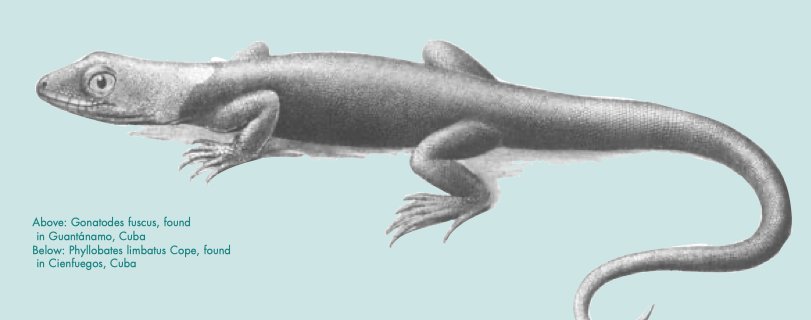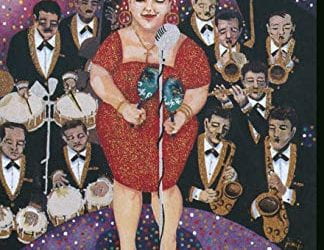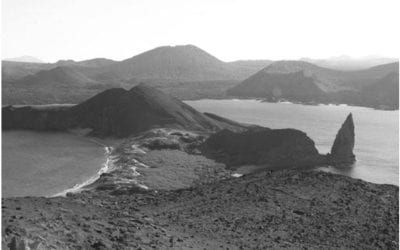The Herpetology of Cuba
Bringing Old Books to Life
Cuba is often on our minds for geopolitical reasons, but the island nation has long fascinated students of flora and fauna.
The Society for the Study of Amphibians and Reptiles, an association of biologists from more than 60 countries, recently reprinted The Herpetology of Cuba by Thomas Barbour and Charles T. Ramsden, with an introduction by Rodolfo Ruibal.
Barbour (1884-1946) was Curator of Herpetology and Director of Harvard University’s Museum of Comparative Zoology. He was a specialist in zoogeography and the herpetology of islands, particularly the West Indies. His colleague Ramsden, an entomologist and naturalist, studied first at Yale, then at the Universidad de la Habana, where he received his doctorate in lepidopteran systematics in 1917. Ramsden was a resident of Guantánamo, Cuba, and collected herpetological and ornithological specimens, mostly from eastern Cuba.
In his introduction to the well-illustrated facsimile reprint of the book, first published in 1919 in the Memoirs of the Museum of Comparative Zoology, and long out-of-print, Ruibal, a professor at the University of California, Riverside, places the book in historical context:
“Barbour first visited Cuba in 1908 and made more than 30 visits to the island. He traveled extensively throughout the country and resided for long periods at the Harvard gardens in Soledad, near Trinidad in southern Cuba. Barbour considered himself a Cuban ‘by adoption’ and derived great pleasure from his Cuban friends. He even described himself as ‘aplatanado’ (bananified), which is the Cuban term for a foreigner who has acquired Cuban characteristics.
“Barbour published his Harvard Ph.D. thesis ‘Zoogeography of the East Indies’ in 1911 and the same year was appointed curator of reptiles and amphibians at the Museum of Comparative Zoology. He published over 200 papers in herpetology, as well as popular books such as ‘The Naturalist at Large,’ ‘That Vanishing Eden,’ and ‘A Naturalist in Cuba.’ Barbour’s ‘Reptiles and Amphibians, Their Habits and Adaptions’ was published in 1926, with a revised edition in 1934. This well-illustrated book offered to the general public a concise presentation of the biology of reptiles and amphibians and an excellent bibliography on the subject. The last chapter of the book is a discussion on evolution. In it, the author praises Darwin and the ‘Origin of Species,’ acknowledges the function of isolation in speciation, and considers the origins of variation…
“Almost all of the species are illustrated in fifteen full page plates…A measure of Barbour’s taxanomic competency is the fact that 66 of the 70 taxa listed in ‘Herpetology in Cuba’ in 1919 are still regarded as valid species or subspecies today…
“In summary, ‘Herpetology of Cuba’ is an excellent presentation of the taxonomy of Cuban reptiles and amphibians. The text not only illustrates Barbour’s knowledge of fauna, but his pleasure in gathering and analyzing the data. His extensive field experience throughout the Cuban countryside allowed him to provide the Cuban common names for the species and to include distributional and ecological observations.”
A special thanks to the Society for the Study of Amphibians and Reptiles for permission to reproduce text and images from the reprinted version of Herpetology of Cuba, with another special thanks to James Hanken, the present Curator in Herpetology and Director of the Museum of Comparative Zoology for suggesting the idea in the first place—JCE
Fall 2004/Winter 2005, Volume III, Number 1
Related Articles
Editor’s Letter: Flora and Fauna
Ellen Schneider’s description of Sandinista leader Daniel Ortega in her provocative article on Nicaraguan democracy sent me scurrying to my oversized scrapbooks of newspaper articles. I wanted to show her that rather than being perceived as a caudillo
Bilingual Aesthetics: A New Sentimental Education
After an exhausting game of soccer with a crew of Mexico City street children, Vicente, a young teenager of 13 said, “Vamonos a la verga.” It was my third day with Casa Alianza, the international…
Nature and Citizenship
Two first-time visitors to the Galapagos archipelago begin their experience in exactly the same way. Two hours after departing mainland Ecuador, their plane descends towards the island of…





